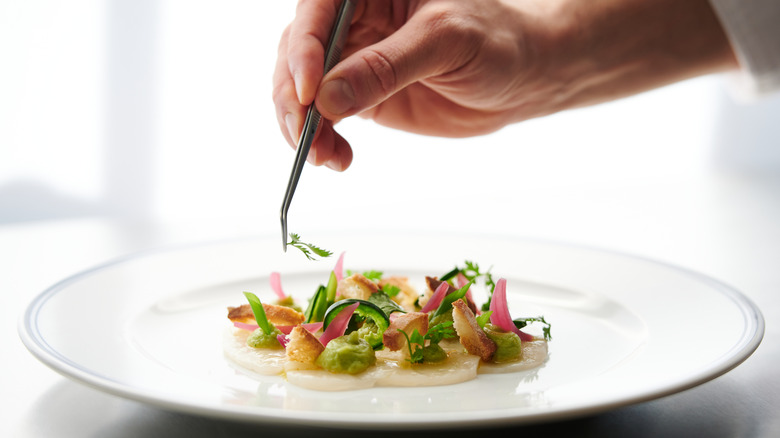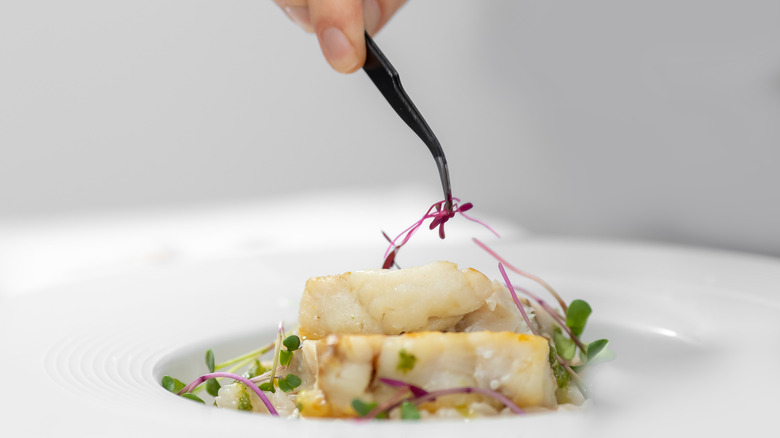Why Do Some Chefs Plate Meals With Tweezers?
Steal a sneak peek from the kitchen of any fine dining establishment and you'll likely find chefs wielding tweezers. To be clear, these aren't the kind you'll find in the beauty aisle of a department store. Larger and somehow sleeker, these stainless steel tweezers boast fine tips that effortlessly grip anything from a chunky steak to dainty pea shoots. No doubt versatile, what makes tweezers so essential for some chefs during plating?
Although tweezers are a relatively recent addition to professional kitchens, the concept of using a tool with pinch-like precision is nothing new. In fact, while tweezers first debuted in Western kitchens in the 1990s, Asian cultures have long favored chopsticks as the culinary tool of choice. Yet, unlike chopsticks that are used by both the chef and humble home cook, tweezers tend to remain reserved for restaurant use — but, that doesn't mean that investing in a pair for home use isn't worthwhile.
Great for grasping ingredients, the length of the prongs means that tweezers can be plunged into simmering stews to remove herbs or retrieve proteins from sizzling pans without the risk of burns. They can also be used to do things like peel the skins off charred peppers and debone fish. However, when it comes down to it, tweezers excel during plating, which is why so many chefs can't live without them.
Culinary tweezers allow for better precision
Beyond gripping and grabbing, plating is where chefs really sing the praises of kitchen tweezers. A sleek tool that can easily fit into a chef's coat pocket, tweezers provide the ultimate level of precision. Allowing for more control, its pointed ends make the tool a must when crafting the artfully detailed dishes that are iconic of haute cuisine. Ideal for adding the final touches to a dish, they ensure each element is placed exactly where it's meant to be, which can play a factor in how a dish is meant to be tasted.
Additionally, the other reason why chefs use tweezers during plating is that delicate ingredients can be handled with care. For example, a tempered chocolate garnish doesn't face the risk of melting from body heat when plated using tweezers. Similarly, tweezers can prevent a flimsy sheet of gold leaf from folding or save delicate herbs from bruising. Yet, the benefits of culinary tweezers don't end there.
Plating less fickle ingredients can also be executed more efficiently with a pair of pinchers in tow. Look no further than an aesthetic bowl of spaghettini, perfectly twirled thanks to a set of long-pronged tweezers. Helping to keep plates looking pristine every time, it's no wonder that some chefs advocate so strongly for tweezers.

